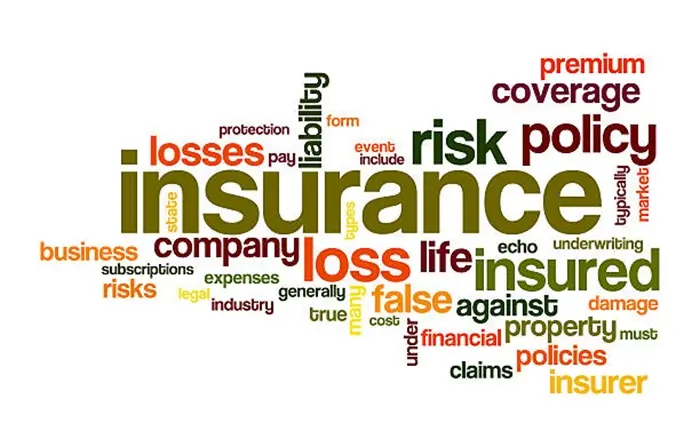Errors and Omissions (E&O) insurance is a critical safeguard for professionals who provide advice, services, or expertise to clients. It protects against claims of negligence, mistakes, or failure to deliver promised results. Many industries, including finance, law, consulting, and real estate, rely on E&O coverage to mitigate financial risks.
Determining the right amount of E&O insurance depends on several factors. These include the nature of your work, potential liability exposure, client expectations, and industry standards. While there is no one-size-fits-all answer, a structured approach can help you assess your needs accurately.
Key Factors Influencing E&O Coverage
Nature of Your Business
The type of services you offer plays a significant role in determining coverage limits. High-risk professions, such as financial advising or legal consulting, often require higher coverage due to the substantial financial impact of potential errors. Conversely, lower-risk fields may need less extensive protection.
Consider whether your work involves large transactions, regulatory compliance, or long-term client commitments. These factors increase exposure to claims, justifying higher policy limits.
Client Requirements
Many clients, especially large corporations or government entities, mandate minimum E&O coverage levels in contracts. Failing to meet these requirements could disqualify you from securing key projects. Review client agreements carefully to ensure compliance.
Even if not explicitly required, maintaining adequate coverage enhances credibility. Clients are more likely to trust professionals who demonstrate financial responsibility and risk management preparedness.
Industry Standards
Benchmarking against peers provides useful guidance. Industry associations often publish recommended coverage levels based on common risks. For example, financial advisors may follow guidelines from regulatory bodies, while IT consultants might reference tech industry norms.
If your profession has licensing requirements, check whether E&O insurance is compulsory. Some jurisdictions or professional bodies enforce minimum coverage thresholds.
Financial Exposure
Assess the potential cost of a claim. This includes legal defense fees, settlements, and reputational damage. A single lawsuit could exceed your policy limits, leaving you personally liable for remaining costs.
Evaluate past claims in your industry to gauge realistic risk levels. Historical data helps estimate worst-case scenarios, ensuring your coverage aligns with actual threats.
Calculating the Right Coverage Amount
Assessing Risk Scenarios
Start by identifying possible errors that could lead to claims. For instance, a financial planner might face lawsuits over incorrect investment advice, while an architect could be liable for design flaws.
Estimate the financial impact of such errors. Would a claim likely involve thousands or millions in damages? This assessment helps determine whether basic or high-limit coverage is necessary.
Balancing Cost and Protection
Higher coverage limits increase premiums, but underinsuring can be far costlier in the long run. Striking a balance is essential.
Consider a layered approach if standard policies are insufficient. Excess or umbrella policies provide additional protection beyond primary E&O limits, often at a reasonable cost.
Legal and Regulatory Considerations
Some professions face strict liability rules. For example, securities brokers must adhere to Securities and Exchange Commission (SEC) or Financial Industry Regulatory Authority (FINRA) requirements. Non-compliance can result in fines or license revocation.
Consult legal or insurance experts to ensure your coverage meets all regulatory obligations.
Common Mistakes in Choosing E&O Insurance
Underestimating Risks
Many professionals assume their likelihood of facing a claim is low. However, even frivolous lawsuits incur legal defense costs. Adequate coverage ensures you can defend yourself without financial strain.
Ignoring Policy Exclusions
E&O policies often exclude certain activities, such as intentional misconduct or fraud. Review exclusions carefully to avoid gaps in protection. Supplemental policies may be needed for uncovered risks.
Failing to Update Coverage
Business growth or service expansions can alter risk profiles. Regularly reassess your coverage to reflect current operations. An outdated policy may leave new vulnerabilities unaddressed.
Practical Steps to Determine Your Needs
Consult an Insurance Professional
An experienced broker can analyze your business and recommend appropriate coverage. They provide insights into industry trends, policy options, and cost-saving strategies.
Review Historical Claims Data
If available, examine past claims within your firm or industry. This data highlights common risks and typical settlement amounts, informing your coverage decisions.
Evaluate Contractual Obligations
Ensure your policy meets all client-mandated requirements. Falling short could breach contracts and jeopardize business relationships.
Consider Future Growth
Anticipate how your business might evolve. Expanding services, entering new markets, or hiring additional staff can increase liability exposure. Opt for scalable coverage that adapts to changing needs.
The Role of Deductibles in E&O Insurance
When selecting an E&O policy, the deductible amount is an important consideration. A higher deductible typically lowers your premium but increases out-of-pocket costs if a claim arises. Assess your financial ability to cover the deductible in case of a lawsuit. Some professionals prefer a lower deductible for predictable expenses, while others opt for higher deductibles to reduce ongoing costs. The right balance depends on your risk tolerance and cash flow.
Claims-Made vs. Occurrence Policies
E&O insurance is usually offered on a claims-made basis, meaning it only covers claims reported during the policy period. Some insurers offer occurrence policies, which cover incidents that happened while the policy was active, regardless of when the claim is filed. Claims-made policies are more common but may require purchasing an extended reporting period (tail coverage) if you cancel or switch insurers. Understanding these differences ensures continuous protection.
The Impact of Business Size on Coverage Needs
Sole proprietors and small firms may assume they need less coverage than larger corporations. However, even individual professionals can face substantial claims, especially if working with high-net-worth clients. Conversely, larger firms may have more resources but also greater exposure due to higher transaction volumes. Your coverage should reflect the scale of your operations and the financial stakes involved in your work.
The Importance of Legal Defense Coverage
E&O insurance not only covers settlements but also legal defense costs, which can be significant even if a claim is unfounded. Some policies have separate limits for defense expenses, while others deduct them from the total coverage. Ensure your policy provides sufficient legal defense funding, as prolonged lawsuits can drain resources quickly. A robust policy allows you to mount a strong defense without compromising your financial stability.
Conclusion
Determining the right amount of E&O insurance requires careful analysis of your profession, client expectations, and potential risks. While there is no universal answer, a methodical approach ensures adequate protection without unnecessary costs.
Start by evaluating industry standards, legal requirements, and financial exposure. Consult experts to tailor coverage to your specific needs. Regularly review and update your policy to keep pace with business developments.
E&O insurance is not just a regulatory formality—it’s a strategic investment in your professional longevity. By securing appropriate coverage, you safeguard your reputation, finances, and peace of mind.
Related Topics:
How Much E&o Insurance Do I Need as a Notary?



































